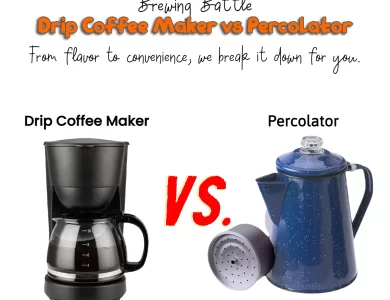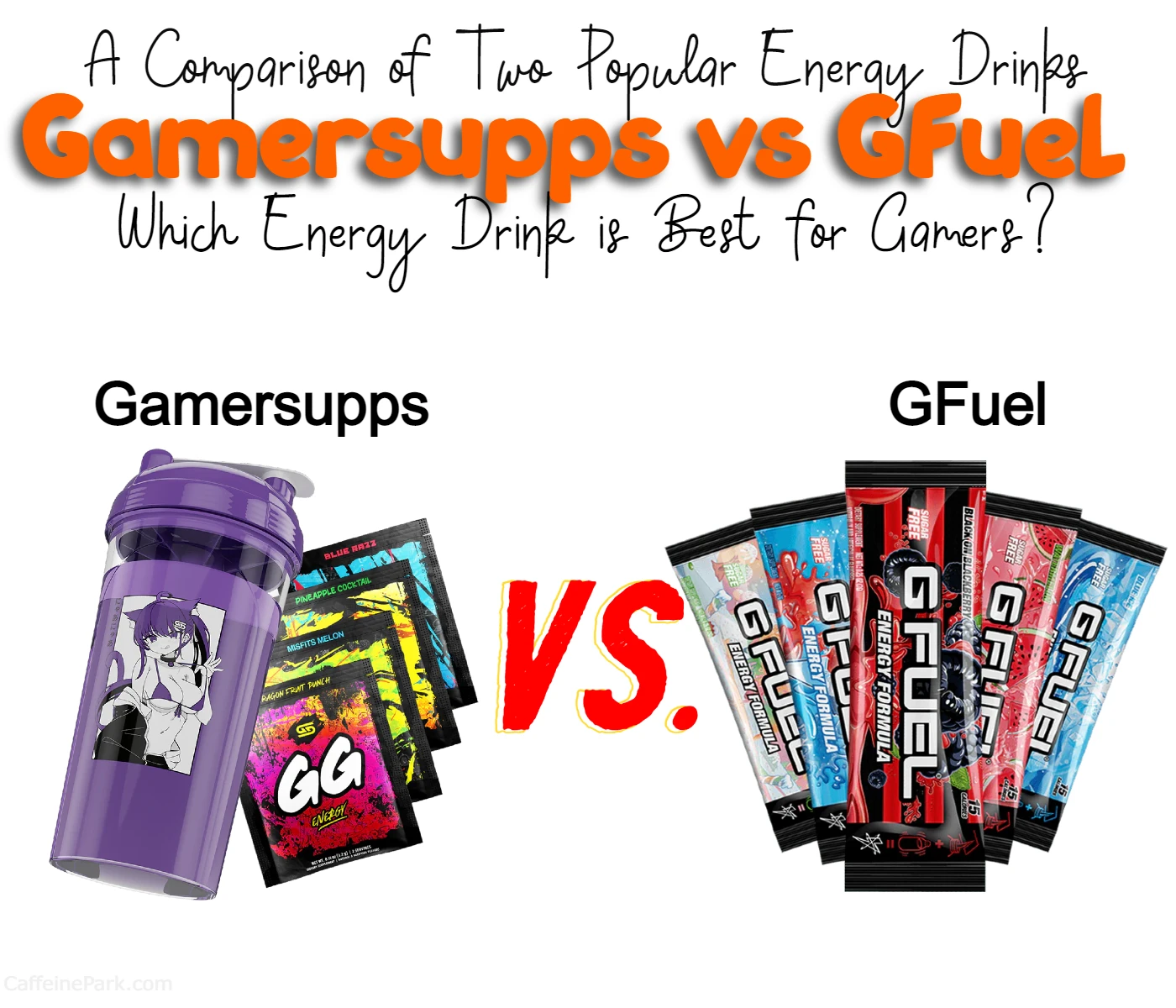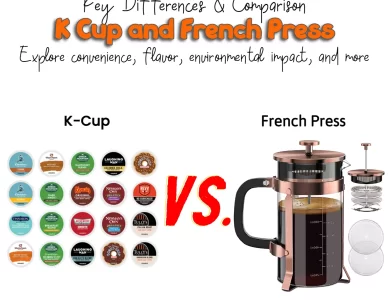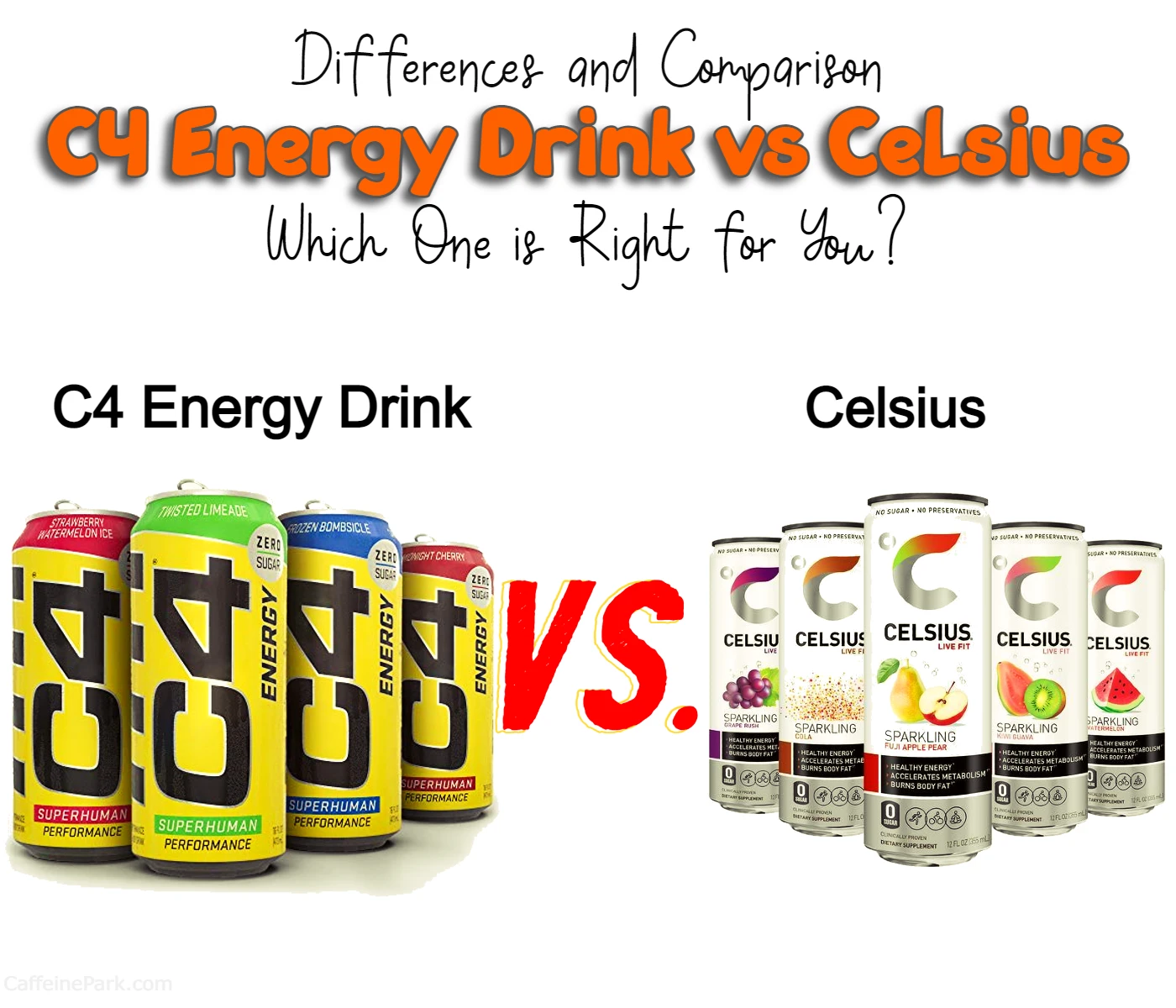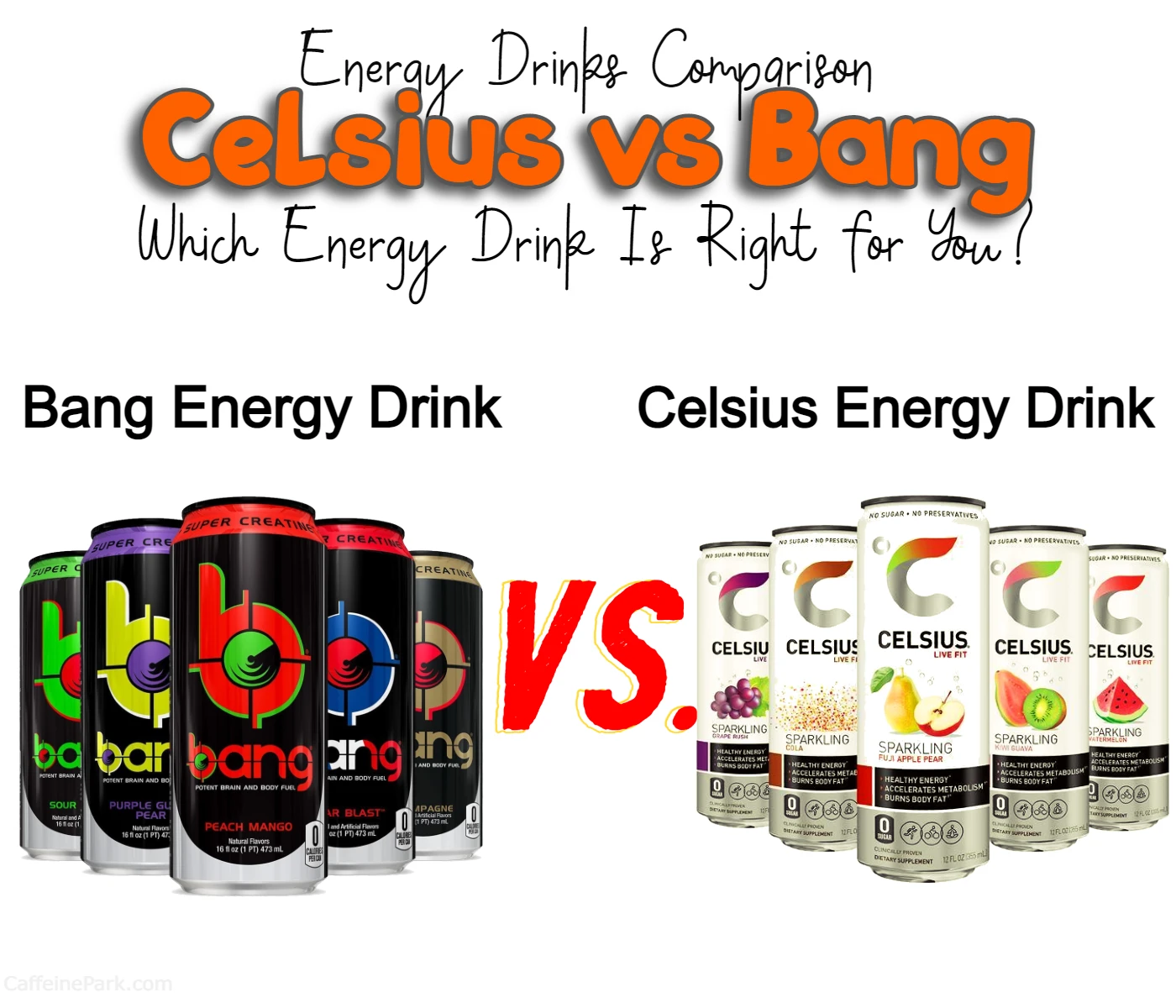Difference Between
-

Diet Pepsi vs Pepsi Zero Sugar
If you're a fan of low-calorie sodas, you might be wondering what sets Pepsi Zero and Diet Pepsi apart. While both of these drinks are marketed as low-calorie alternatives to regular Pepsi, there are actually some key differences between them. One of the biggest differences is the type of sweetener used. Diet Pepsi is sweetened with aspartame, while Pepsi Zero is sweetened with a combination of aspartame and acesulfame potassium (Ace-K). Additionally, some people find that Pepsi Zero has a slightly sweeter taste than Diet Pepsi, likely due to the use of Ace-K. Other factors to consider include caffeine content and packaging, with Pepsi Zero containing more caffeine and only being available in cans. Ultimately, the choice between Pepsi Zero and Diet Pepsi comes down to personal preference, and this article will help you make an informed decision.
-

Oily Coffee Beans vs. Dry
Coffee lovers, it's time to unravel the intriguing contrasts between two types of coffee beans - oily and dry. The disparity between these beans goes beyond their surface appearance and extends into the very essence of your coffee experience. At the heart of this distinction lies the moisture content within the beans, which dictates everything from flavor profiles to roasting methods. Oily coffee beans, with their higher moisture content (often exceeding 12%), boast a glossy appearance and are known for their rich, full-bodied character, often accompanied by nutty, earthy, or even chocolatey notes. In the world of brewing, they are prized for their suitability in espresso and French press methods. On the flip side, dry coffee beans, with moisture levels typically below 12%, showcase a matte surface. Their unique attribute is the bright and vibrant flavor profile, featuring fruity, floral, citrus, and berry notes that shine in pour-over and drip brewing methods. Moreover, their extended roasting times allow for gradual flavor development. So, whether you're seeking a bold, robust cup or a brighter, more nuanced experience, the choice between oily and dry coffee beans plays a pivotal role in shaping your morning brew. Let's dive deeper into these differences and empower your coffee selection with knowledge.
-

Drip Coffee Maker vs. Percolator
When it comes to brewing your daily cup of joe, the choice between a drip coffee maker and a percolator can significantly impact your coffee experience. Both methods have their unique strengths and characteristics, making the decision more than just a matter of personal preference. In the battle of Drip Coffee Maker vs Percolator, we dive deep into their brewing processes, flavor profiles, ease of use, and more to help you make an informed choice. Brewing Process: Drip coffee makers rely on a straightforward process where hot water drips over coffee grounds, resulting in a well-balanced and customizable brew. In contrast, percolators use a recirculation method, creating a bold and robust flavor with a strong coffee scent. Flavor and Aroma: Drip coffee makers offer versatility and milder aromas, making them ideal for those who enjoy experimenting with different coffee beans. Percolators, on the other hand, cater to bold coffee lovers, delivering intense flavors and rich, aromatic experiences. Brewing Time: Percolators win the speed race, taking just 5-7 minutes to brew, while drip coffee makers may need 5-10 minutes, depending on the machine and batch size. Ease of Use and Maintenance: Drip coffee makers are user-friendly and low maintenance, perfect for those with busy mornings. Percolators require more attention during brewing and can be a bit more involved in terms of cleaning and maintenance. Coffee Quantity and Serving: Drip coffee makers come in various sizes, accommodating solo coffee drinkers and large gatherings alike. Percolators shine when serving groups, thanks to their larger capacities. Cost Considerations: While drip coffee makers offer a wide price range, percolators are often more budget-friendly, making them an economical choice for coffee enthusiasts. In the end, the choice between these two brewing methods hinges on your taste preferences, lifestyle, and how you want to experience your daily…
-

Lipton Green Ice Tea vs. Arizona Green Tea
When it comes to quenching your thirst with a refreshing and vibrant cup of green tea, two names often stand out – Arizona Green Tea and Lipton Green Iced Tea. While both promise a delightful sip, they offer distinct experiences that cater to different taste preferences and lifestyles. Taste and Ingredients: Arizona Green Tea entices with a bold, sweet flavor accompanied by a hint of honey, making it a favorite among those who enjoy a richer taste profile. In contrast, Lipton Green Iced Tea offers a milder, more laid-back taste that's perfect for those seeking a gentler sip. Ingredients also play a role – Lipton combines green tea leaves with water and high fructose corn syrup, while Arizona opts for green tea leaves, honey, sugar, and ginseng. Pricing and Nutritional Aspects: When it comes to pricing, Lipton often takes the lead in affordability, while Arizona offers larger bottle sizes that can be a cost-effective choice over time. In terms of nutrition, Lipton tends to have slightly more calories and sugar per serving compared to Arizona. Caffeine Content and Availability: Both brands provide a similar caffeine content, making them suitable for those seeking an energy boost. Availability-wise, Lipton's longstanding presence in stores across the United States is notable, while Arizona's unique packaging and flavors have garnered attention among younger consumers. In Conclusion: Choosing between Arizona Green Tea and Lipton Green Iced Tea is a matter of individual taste and preferences. Whether you're drawn to Arizona's robust sweetness or Lipton's milder approach, both brands offer a refreshing and enjoyable way to quench your thirst and add a touch of flavor to your day.
-

Gamersupps vs GFuel
In the dynamic world of energy supplements catering to gamers and fitness enthusiasts, GamerSupps and G Fuel stand out as prominent contenders. While both brands offer a boost of energy and focus, their unique characteristics set them apart. GamerSupps presents a diverse range of flavors, from the tantalizing "Sour Pixel Potion" to the delightful "Strawberry Burst." This array caters to different taste preferences and keeps users excited about their energy drink choices. On the other hand, G Fuel takes pride in its innovative collaborations, introducing an ever-expanding repertoire of flavors that often resonate with the gaming community's culture and icons. The distinction in ingredient focus is another notable factor. GamerSupps combines its energy-boosting components with additional nutrients, such as vitamins, minerals, and even skin-enhancing elements in its "Glow" series. Conversely, G Fuel zeros in on providing an intense energy kick, with caffeine and amino acids taking the forefront in their formulations. The differences extend to packaging as well. GamerSupps offers various canister sizes to cater to individual needs, while G Fuel's convenient "Stick Packs" ensure portability for gamers on the move. Pricing strategies diverge, with GamerSupps positioning itself as a budget-friendly option with discounts, while G Fuel leans towards a premium positioning with higher costs justified by premium ingredients and collaborations. The choice between GamerSupps and G Fuel ultimately depends on your flavor preferences, energy requirements, and whether you prioritize affordability or exclusivity in your energy supplement experience.
-

French Pres vs. K-Cup
When it comes to indulging in the world of coffee, two prominent contenders stand out: K-Cups and the French Press. These brewing methods offer distinct experiences, each catering to different preferences and priorities. K-Cups, those nifty single-serving coffee pods, promise convenience and speed, delivering a cup of coffee at the push of a button. On the other hand, the French Press invites you to immerse yourself in the art of manual coffee-making, emphasizing flavors and the tactile pleasure of the brewing process. The differences between these two methods extend beyond mere convenience versus tradition. K-Cups offer a wide array of flavors, making them a favorite for those who appreciate diversity in their daily cup. However, the environmental impact of the plastic pods raises concerns. In contrast, the French Press shines with its eco-friendliness, allowing for a more sustainable coffee ritual. Whether you're a busy bee seeking efficiency or a coffee aficionado chasing the perfect brew, delving into the disparities between K-Cups and the French Press will undoubtedly help you decide which path best complements your coffee journey.
-

Red Bull vs Celsius
When it comes to energy drinks, Celsius and Red Bull are two popular brands that dominate the market. While both aim to provide an energy boost, they differ in several aspects, including ingredients, target audience, and effects. Celsius, known for its fitness-oriented approach, offers a unique blend of ingredients that claim to boost metabolism and aid in weight loss. With ingredients like green tea extract, guarana seed extract, and ginger root extract, Celsius focuses on thermogenesis, which increases the body's temperature to burn calories. Additionally, Celsius contains no sugar and is packed with vitamins and minerals, making it a popular choice among health-conscious individuals. On the other hand, Red Bull is recognized for its high caffeine content and association with extreme sports and a youthful lifestyle. Its primary ingredients include caffeine, taurine, and B-vitamins, which are believed to enhance energy levels and improve focus. Red Bull's signature 250ml can and distinctive flavor have become synonymous with energy drinks worldwide, appealing to a wide range of consumers seeking a quick pick-me-up. While both Celsius and Red Bull provide an energy boost, their effects may vary due to differences in ingredients and formulations. Celsius is often favored for its thermogenic properties, offering a gradual increase in energy levels and a sustained effect over time. In contrast, Red Bull's high caffeine content delivers an instant jolt of energy, but its effects may wear off relatively quickly. In conclusion, Celsius and Red Bull have distinctive characteristics that cater to different consumer preferences. Whether you prioritize fitness and weight management or seek an immediate energy surge, understanding the differences between these energy drinks can help you make an informed choice based on your specific needs and goals.
-

Celsius vs C4
If you're in the market for an energy drink to help boost your energy levels and increase your focus, you might be considering C4 and Celsius. While both drinks offer similar benefits, there are some key differences to consider. C4 contains a proprietary blend of ingredients that includes caffeine, beta-alanine, and creatine, while Celsius contains caffeine, taurine, and ginger extract. Both are sugar-free and contain no calories, but they do have different flavors and price points. It's important to be mindful of the potential side effects of consuming energy drinks and to choose the one that aligns with your health goals and preferences. By learning about the differences between C4 and Celsius, you can make an informed decision about which one is right for you.
-

Celsius Energy vs Bang Energy
If you're looking for a quick energy boost, you may be considering Bang or Celsius energy drinks. While both brands offer similar benefits, like increased focus and improved performance, they have some key differences that may make one brand more suitable for your needs. Bang is known for its high caffeine content and association with extreme sports, while Celsius is marketed as being suitable for a wider range of activities, like yoga and hiking. Both drinks have their own unique ingredients, flavors, and potential side effects, so it's important to carefully consider these factors before making your decision. Read on to learn more about the differences between Bang and Celsius energy drinks, and find out which one is right for you.
-

Monster vs Celsius
Celsius and Monster are two of the most popular energy drinks on the market, but they have some key differences. Celsius is a low-sugar, low-calorie drink that's packed with vitamins and natural ingredients, while Monster is a sweet, indulgent drink that contains high levels of sugar and caffeine. Both drinks have their own unique flavors and benefits, but it's important to be mindful of your caffeine and sugar intake and to drink them in moderation. Read on to learn more about the difference between Celsius and Monster, and find out which energy drink is better for you.


